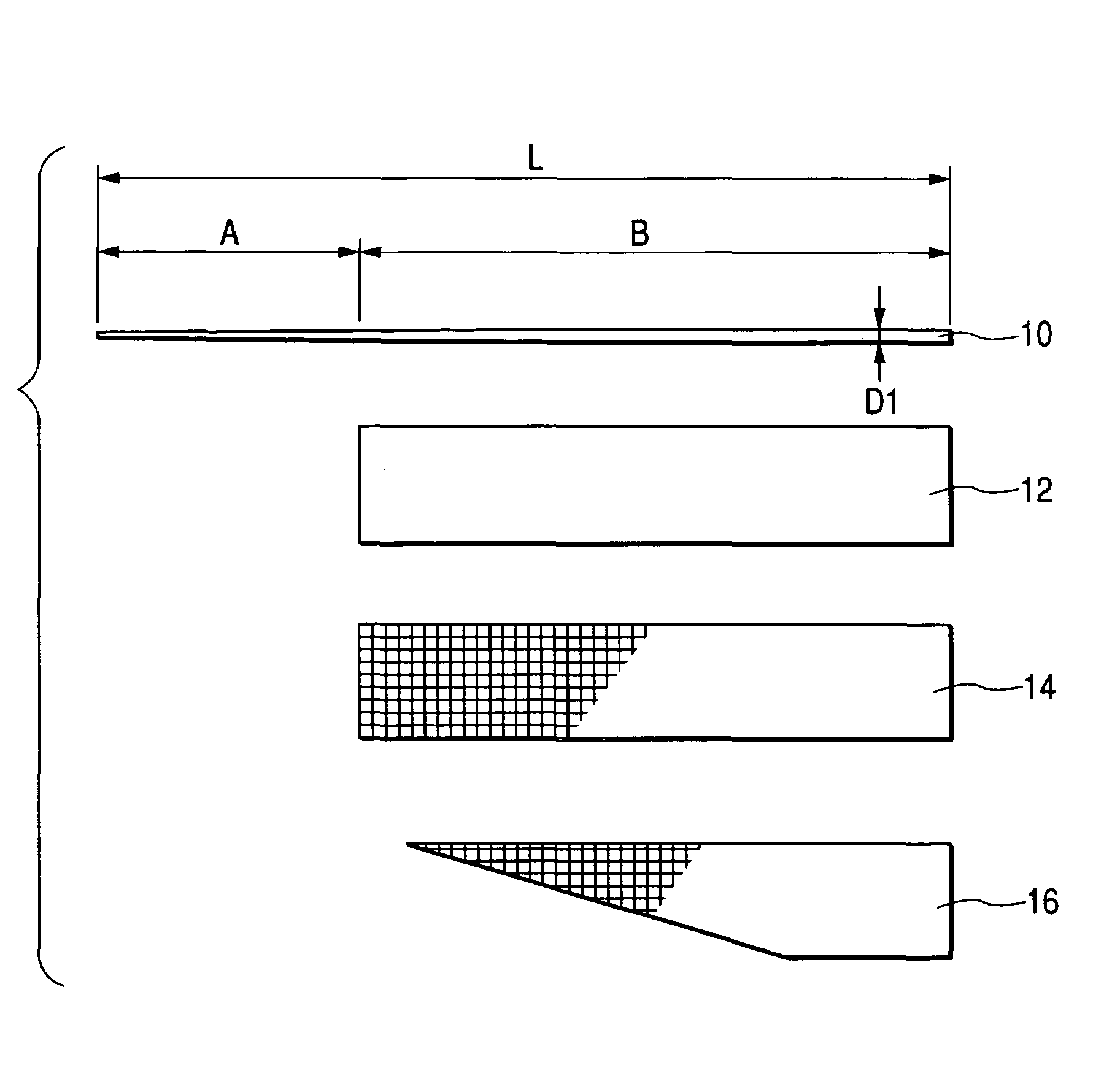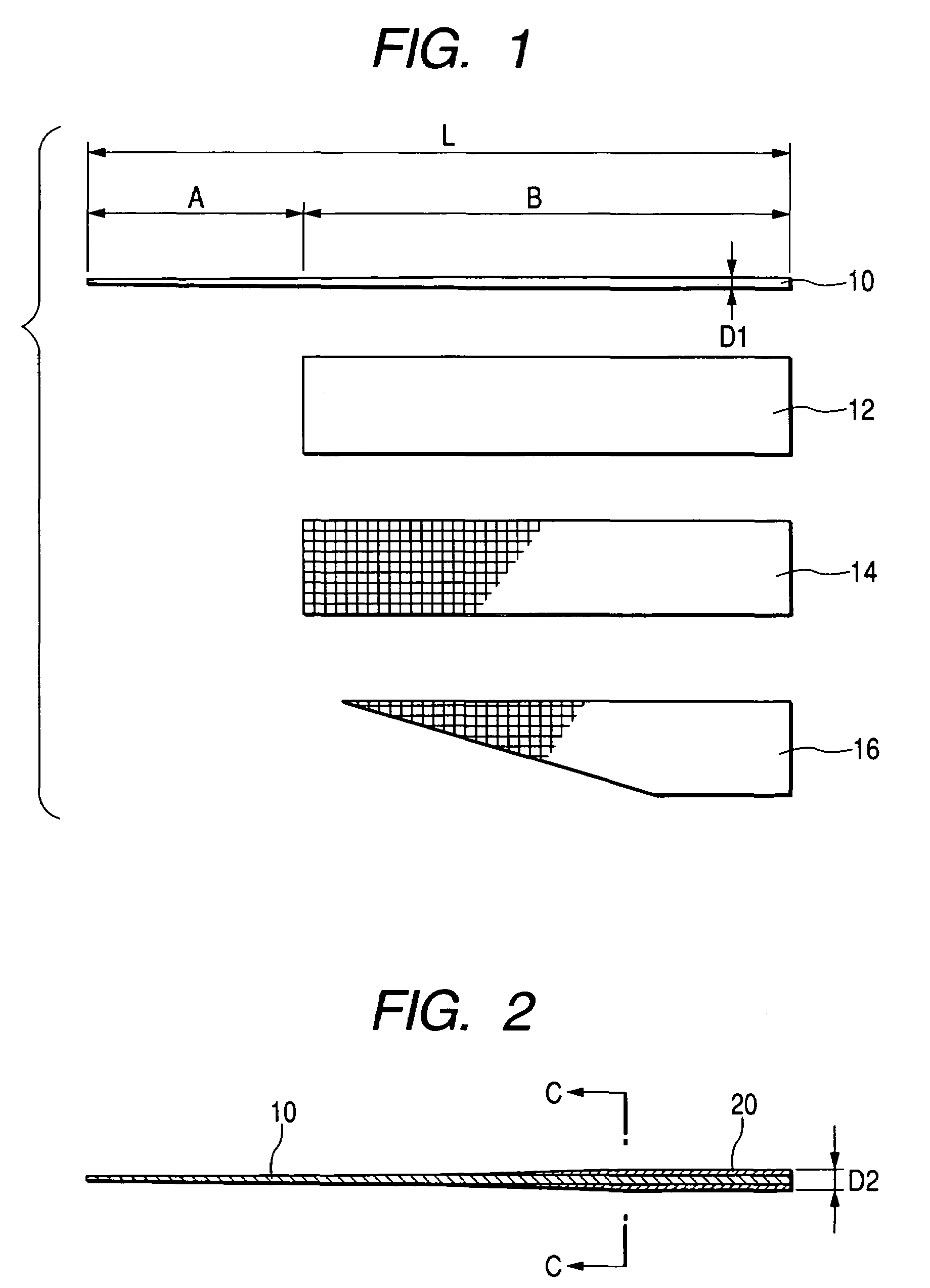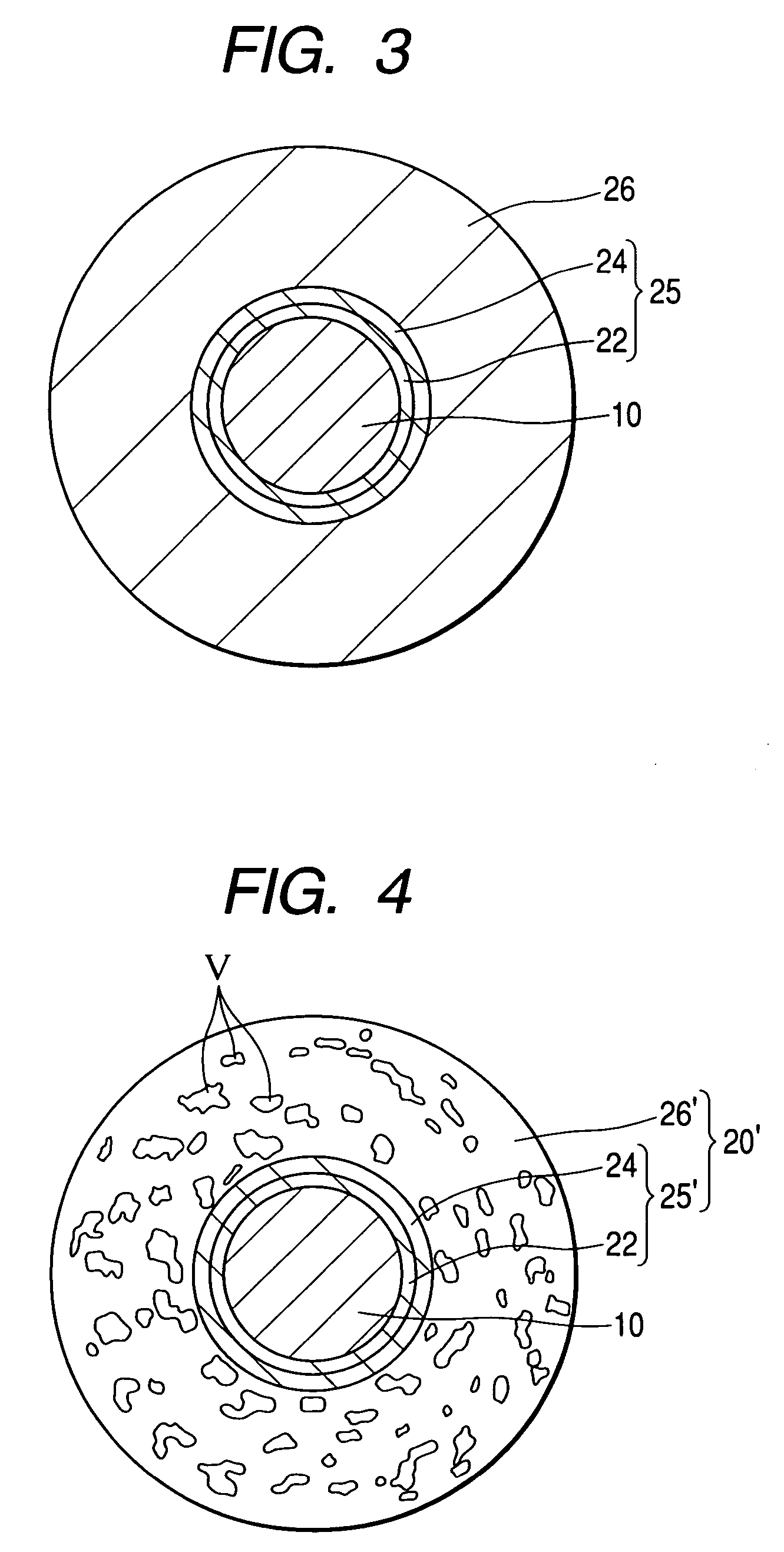Tip rod
a tip rod and rod body technology, applied in the field of tip rods, can solve the problems of difficult to approximate the elongation percentage, difficulty in giving an oval shape of solid materials, and difficulty in bending fishing rods, and achieve the effect of preventing loose screws and reducing breakag
- Summary
- Abstract
- Description
- Claims
- Application Information
AI Technical Summary
Benefits of technology
Problems solved by technology
Method used
Image
Examples
first embodiment
[0063]FIG. 1 is a drawing explaining a method for manufacturing the tip rod according to a first embodiment of the invention. Of previously-explained examples of super-elastic alloys, in this embodiment, the solid core material 10 made with an Ni—Ti alloy is 530 mm in length L, and the tip part region A is in a tapered shape, with the diameter at the tip end about 0.3 mm. In general, the diameter is preferably in a range from 0.2 to 0.3 mm to provide delicateness. The rest of the rear part region B is straight and about 1.1 mm in diameter D1. The rectangular resin sheet 12 along almost the entire length of the rear part region B and the similar-sized prepreg sheet 14 made with a glass fiber woven textile are super imposed and wound up together. The resin used in this resin sheet is epoxy resin, as with that used in the sheet 14 or the sheet 16 to be explained later. The resin sheet 12 is 13 microns in thickness and the prepreg sheet 14 is about 17 microns, and will be wound around, ...
second embodiment
[0068]Next, an explanation will be made for a second embodiment of the invention. This embodiment is different from the first embodiment in constitution of an additionally reinforced resin region (layer). Since remaining constitution are the same as the first embodiment, the same symbols are given and the explanation will be omitted. FIG. 4 is an enlarged transverse cross sectional view of the tip rod, when viewed from the arrow line C-C in FIG. 2 according to a second embodiment.
[0069]Observation of the cross section reveals a plurality of bubbles V on the outside layer 26′ formed by the prepreg sheet 16, as shown in FIG. 4. In this instance, the bubbles are found only on the layer 26′ in the body but they could be produced on the resin-rich layer 25′ as well, although small in number. In other words, the bubbles could be dispersed in the fiber-reinforced resin region (layer) 20′ which combines the resin-rich layer 25′ and the outside layer 26′. The bubbles are mostly found in size...
third embodiment
[0072]FIG. 5 is a longitudinal sectional view of the tip rod according to a third embodiment of the invention. About half of the front side of the tip rod is the solid member 110 made with an Ni—Ti alloy of the previously-described super-elastic alloys, having a matrix as synthetic resins such as epoxy resin at the rear end part and joining with the tubular member 112 made with a fiber-reinforced resin strengthened with reinforced fibers such as carbon fibers and glass fibers. FIG. 6 is an enlarged view of the joining part of the tip rod and the vicinity. The cylindrical component 114 made with a metal such as stainless steel or brass is pressure-fitted and adhered to the inner surface 112A at the front end part of the tubular member 112, and female screws are provided on the inner surface of the cylindrical part. The outer circumferential surface of this cylindrical part is formed in a fine irregularity polished with sandpaper (No. 100 to No. 600), and the inner surface at the fron...
PUM
| Property | Measurement | Unit |
|---|---|---|
| roughness | aaaaa | aaaaa |
| thickness | aaaaa | aaaaa |
| thickness | aaaaa | aaaaa |
Abstract
Description
Claims
Application Information
 Login to View More
Login to View More - R&D
- Intellectual Property
- Life Sciences
- Materials
- Tech Scout
- Unparalleled Data Quality
- Higher Quality Content
- 60% Fewer Hallucinations
Browse by: Latest US Patents, China's latest patents, Technical Efficacy Thesaurus, Application Domain, Technology Topic, Popular Technical Reports.
© 2025 PatSnap. All rights reserved.Legal|Privacy policy|Modern Slavery Act Transparency Statement|Sitemap|About US| Contact US: help@patsnap.com



